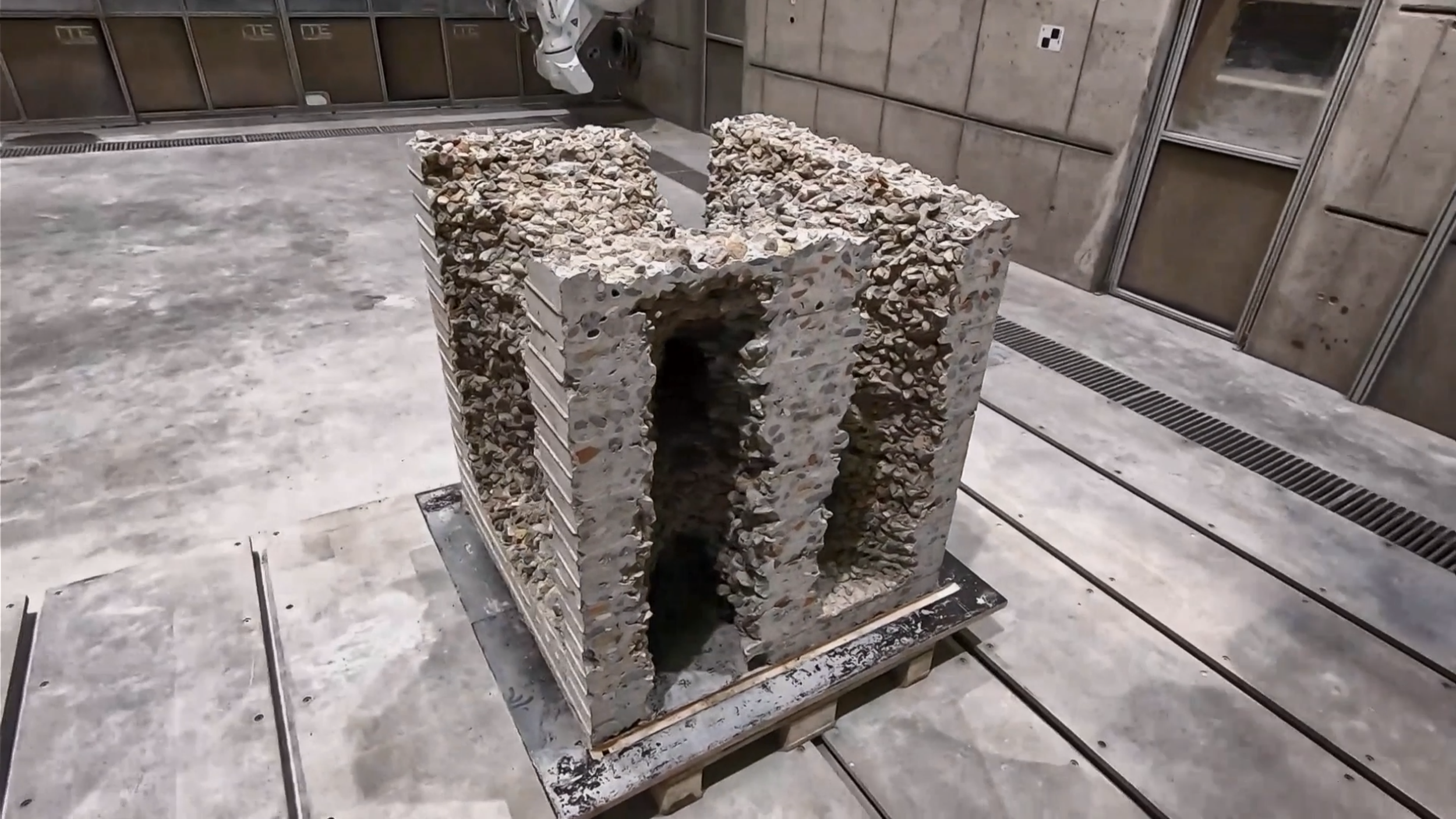Reclaiming
the future
Concept + Design: Aga Blonska
Team: Jakub Bak
Collaboration: Norman Hack and Harald Kloft (TU Braunschweig)
2023
Competition application
The Polish Pavilion in Venice will be filled with rubble of war in Ukraine, originating from selected remains of destroyed residential buildings, and then transformed into an architectural installation using robots and printed concrete. Two symmetrical blocks, 3 metres high and wide and 7 metres long, will stand on the longitudinal axis of the building. The scale of the blocks oscillates below the monumentality and above the sculptural object; it neither overwhelms nor exalts the observer; it is human-friendly and promotes a sense of shelter and inhabitation. The blocks will be covered with a pattern simulating a blast wave. The project will be carried out by programmed robots using minimal energy, material waste and negligible human labour. The first block will be made from black concrete and rubble, with its outer form smooth and polished, while the interior will remain raw, with clear traces of ruins blended into the untreated concrete. The floor inside and outside the block will also feature rubble. Crossing over the footbridge through the dark tunnel, literal immersion in the darkness among the remains as mute witnesses of the war, will evoke a powerful existential experience. The second block will be built of white concrete and gabion glass, which, lit from the inside, will give the effect of a lamp casting light on the walls. Both the interior and exterior will be smoothly finished. The viewers will be able to walk freely around the block and experience its texture by touching the walls. The rubble will be enriched by transparent elements, which will take the form of a surrogate binder of war to become a bridge connecting us to the tradition of modernism and the dreams and hopes inscribed in it. One of the key components of this form is blocks of glass inspired by glass shards caused by bombing. In this structure, the ruins will become a carrier of light, with all its symbolic background.
For the installation, we will use an innovative technology developed at the Technical University of Braunschweig, which agreed to provide technical support and implement the designed objects. In response to the main theme of the exhibition of the 23rd Venice Architecture Biennale, “the Laboratory of the Future”, we will show the practical use of means that can practically help to rebuild cities using a rapid and sustainable technology. Our aim is to show that innovation can play a key role in rebuilding post-war cities without altering the assumptions developed by local professionals and their social background.







